 Strategic Waste Reviews
Strategic Waste Reviews
 Background
Background
• Waste Minimisation and Management Plan 2017-23 informs
the waste work at HCC
• September 2018: Officers commenced strategic reviews into
three waste areas
• Residential hazardous waste
• Resource recovery
• Kerbside collection
• Key question:
Are the current services still fit for purpose, and if
not, what are the alternatives available?
• Consultants Morrison Low Ltd, with key expertise
in waste management, were commissioned to
assist in this process
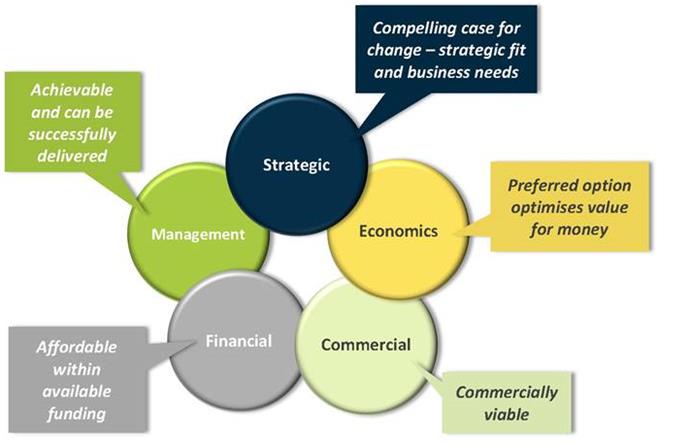 Business cases?
Business cases?
• A way of systematically thinking through the
problem, and determining options
• Our approach follows Treasury’s
Better
Business Case model
• Focused on outcomes
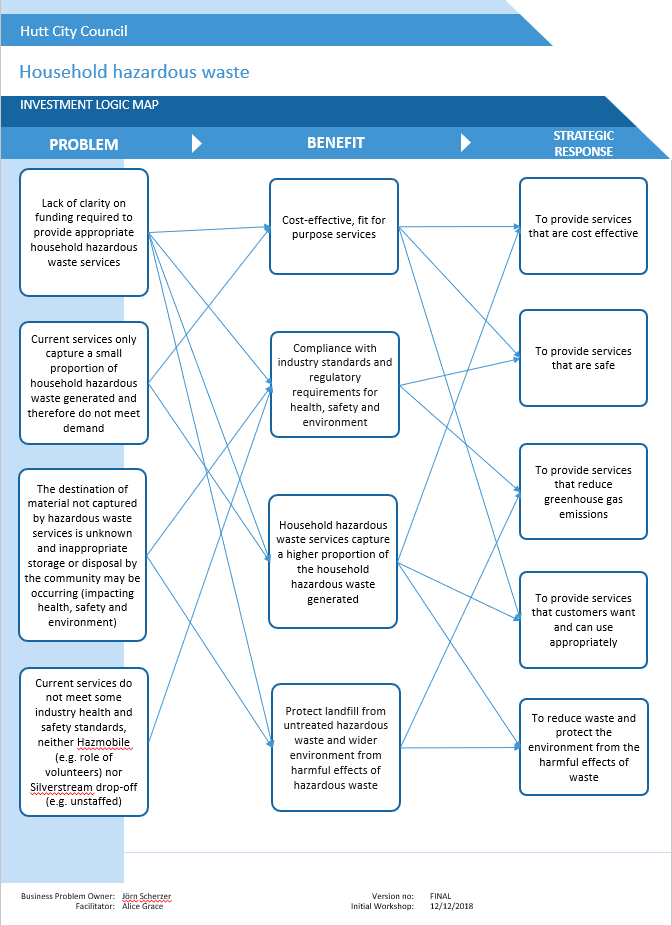 The process
The process
Investment Logic Map
Strategic investment objectives
•
provide services that are cost effective
•
provide services that are safe
•
provide services that reduce greenhouse
gas emissions
•
provide services that customers want
and can use appropriately
•
reduce waste and protect the
environment from the harmful effects of
waste
Long list of options
Scope Options (What)
Service Solution Options (How) Note: education and advocating for national product stewardship common to all options
Service Delivery Options (Who)
Implementation Options (When)
Funding Options
SC-1
SC-2
SC-3
SC-4
SC-5
SS-1
SS-2
SS-3
SS-4
SS-5
SS-6
SS-6a
SS-7
SS-8
SS-9
SS-10
SD-1
SD-2
SD-3
SD-4
SD-5
SD-6
IM-1
IM-2
FU-1
FU-2
FU-3
FU-4
FU-5
Enhanced landfill
Household
drop off (e.g.
Status quo: jointly
Status quo:
Household
Household
hazardous waste +
Status quo:
Hazmobile every
Hazmobile every
Jointly delivered
Jointly delivered
Council Waste
Household
staffed by qualified
Hazmobile six
Hazmobile every
Hazmobile every
Hazmobile six
Landfill drop off
No council service,
delivered with
Council alone,
Council landfill
household
hazardous waste + hazardous waste +
commercial
hazmobile
two years +
two years +
Network of drop off
Council alone,
with UHCC,
with wider region,
Rates runded
Council user
Levy Funds and
Private user
Description of Option:
hazardous waste,
handler, quantity
monthly + network two years, no drop
year, no drop off
monthly, no drop
point only
education and
UHCC, council
contracted
Private service only
Do now
Do later
revenue from gate
hazardous waste,
agricultural
commercial
hazardous waste + annually + landfill
enhanced landfill network of drop off
points
council staff only
contracted
contracted
(waste levy funded)
charges
landfill revenue
charges
limited range
restrictions, haz
of drop off points
off points
points
off points
(unstaffed)
advocacy only
staff + contracted
specialists only
fees
full range
chemicals
hazardous waste
agricultural
drop off (unstaffed)
drop off
points
specialists only
specialists only
from gate fees
waste fee review,
specialists
Short list of
chemicals
advertise service)
Investment Objectives
No - high cost to
No - high cost to
Partial - low cost
Yes - increased
Partial - user
Partial - increased
Yes - cost effective,
Yes - cost effective,
No - cost
Partial - increased
provide
provide
service but low
cost but chance to
Partial - increased
Partial - increased
Partial - increased
Partial - capture
Partial - council
charges may
costs by have both
Yes - economies
Yes - economies
Yes - economies
No - increased
Yes - options
Yes - options
but may require
but may require
potentially
To provide services that are cost effective
Yes - cost effective
Yes - cost effective cost but increased
commercial
commercial
capture rate and
improve service
capture but
capture but
Yes - cost effective
Yes - cost effective
capture but
Yes - cost effective may increase and
Yes - cost effective
resources alone
Yes - cost effective
Yes - cost effective
discourage
enhanced drop off
of scale
of scale
of scale
cost for residents
supports this
supports this
rates funding other rates funding other
unaffordable for
capture
service alongside service alongside not fully compliant
and raise
increased cost
increased cost
increased cost
cost will increase
may cost more
customers using
and Hazmobile
services
services
residents
options
domestic
domestic
with regulations
awareness
service
Yes - meets H&S
Yes - meets H&S
Yes - meets H&S
Yes - meets H&S
Yes - meets H&S
Yes - meets H&S
Yes - meets H&S
Yes - meets H&S
Partial - user
Partial - user
Partial - limited
No - delays
Yes - encourages
Yes - encourages
Yes - encourages
Yes - encourages
No - unstaffed drop
regs and
regs and
regs and
regs and
regs and
regs and
regs and
No - unstaffed drop
regs and
No - inappropriate
Partial - risk with
Yes - contractors
Yes - contractors
Yes - contractors
charges may
charges may
range may
No - haz waste is
Yes - no Council
Yes - options
implementation of
Yes - options
Yes - options
Yes - options
To provide services that are safe
safe disposal of
safe disposal of
safe disposal of
safe disposal of
off is a health and
encourages safe
encourages safe
encourages safe
encourages safe
encourages safe
encourages safe
encourages safe
off is a health and
encourages safe
disposal will take
council staff
specialists in haz
specialists in haz
specialists in haz
discourage
discourage
increase incorrect
specialist service
service
supports this
safety
supports this
supports this
supports this
haz waste
haz waste
haz waste
haz waste
Safety risk
disposal of haz
disposal of haz
disposal of haz
disposal of haz
disposal of haz
disposal of haz
disposal of haz
Safety risk
disposal of haz
place
volunteering
waste
waste
waste
customers from
customers from
disposal
improvements
waste
waste
waste
waste
waste
waste
waste
waste
safe disposal
safe disposal
Partial - limited
Partial - limited
Partial - limited
Partial - limited
Partial - limited
Partial - limited
Partial - limited
Partial - limited
Partial - limited
Partial - limited
Partial - limited
Partial - limited
Partial - limited
Partial - limited
Partial - no change
Partial - no change
Yes - option
Yes - option
Yes - option
Yes - option
Yes - option
Yes - option
Yes - option
Yes - option
Yes - option
Yes - option
Yes - option
Yes - option
Yes - option
To provide services that reduce greenhouse gas emissions
change from
change from
change from
change from
change from
change from
change from
change from
change from
change from
change from
change from
change from
change from
from status quo
from status quo
supports this
supports this
supports this
supports this
supports this
supports this
supports this
supports this
supports this
supports this
supports this
supports this
supports this
status quo
status quo
status quo
status quo
status quo
status quo
status quo
status quo
status quo
status quo
status quo
status quo
status quo
status quo
Partial - service
available more
Partial - supported
widely, but
Partial - service
Yes - increase in
Yes - increase in
Partial - service
Partial - service
Partial - service
Partial - a
Partial - a
Partial - a
Partial - user
Partial - a
No - commercial
No - commercial
No - services may
To provide services that customers want and can use
by customers that
agricultural sector
available but
Partial - may still
Partial - may still
service availability service availability
only available
only available
only available
reduction in
reduction in
reduction in
Yes - option
Yes - option
Yes - option
Yes - option
Yes - option
Yes - option
Yes - option
Yes - option
Yes - residents will
charges may
Yes - residents will
Yes - residents will
reduction in
services are
services are
not be available for
appropriately
use service but
may prefer existing
limited use by
have limited use
have limited use
that may increase that may increase
when hazmobile
when hazmobile
when hazmobile
service but current service but current service but current
supports this
supports this
supports this
supports this
supports this
supports this
supports this
supports this
use service
discourage use of
use service
use service
service
specialised
specialised
residents
limited use overall
options,
customers
use by customers
use by customers
events run
events run
events run
use is low
use is low
use is low
service
particularly urban
area
Partial - unstaffed
Partial - unstaffed
Partial - user
Yes - encourages
Yes - encourages
Yes - encourages
Yes - encourages
Yes - encourages
Yes - encourages
Yes - encourages
Partial - a
Partial - user
drop offs can
drop offs can
charges may
To reduce waste and protect the environment from the harmful
Yes - options
Yes - options
Yes - options
Yes - options
Yes - options
appropriate
appropriate
appropriate
appropriate
appropriate
appropriate
appropriate
Yes - option
reduction in
Yes - option
Yes - option
Yes - option
Yes - option
Yes - option
Yes - option
Yes - option
Yes - option
Yes - option
charges may
Yes - option
Yes - option
create
create
discourage
effects of waste
supports this
supports this
supports this
supports this
supports this
dispsoal haz
dispsoal haz
dispsoal haz
dispsoal haz
dispsoal haz
dispsoal haz
dispsoal haz
supports this
service but current
supports this
supports this
supports this
supports this
supports this
supports this
supports this
supports this
supports this
discourage use of
supports this
supports this
environmental
environmental
customers from
waste
waste
waste
waste
waste
waste
waste
use is low
service
issues
issues
safe disposal
Critical Success Factors (as these CSFs are crucial (not just desirable) any options that score a 'no' are automatically discounted from further analysis
Partial - public
Partial - may
Partial - may
Yes - alignment
Yes - alignment
Partial - council
Yes - alignment
Yes - alignment
Yes - alignment
Yes - alignment
Yes - alignment
Yes - alignment
Yes - alignment
Yes - alignment
Yes - alignment
Yes - alignment
Yes - alignment
Yes - alignment
Yes - alignment
Yes - alignment
Yes - alignment
Strategic fit and business needs -
Alignment with District Plan,
good services
require funding for require funding for
with strategic
with strategic
haz waste services
with strategic
with strategic
with strategic
with strategic
with strategic
with strategic
with strategic
with strategic
with strategic
with strategic
with strategic
with strategic
with strategic
with strategic
with strategic
30yr Infrastructure Strategy & Regional Plans
typically rates
other services
other services
objectives
objectives
for residential
objectives
objectives
objectives
objectives
objectives
objectives
objectives
objectives
objectives
objectives
objectives
objectives
objectives
objectives
objectives
funded
through rates
through rates
Partial - low cost
Yes - increased
Partial - user
Partial - increased
Partial - increased
service but low
cost but chance to
Partial - increased
Partial - increased
Partial - increased
Partial - capture
charges may
Potential value for money -
right solution, right time at the right
costs by have both
Yes - economies
Yes - economies
Yes - economies
Yes - options
Yes - options
Yes - options
Yes - cost effective
Yes - cost effective cost but increased
capture rate and
improve service
capture but
capture but
Yes - cost effective
Yes - cost effective
capture but
may increase and
Yes - cost effective
Yes - cost effective
discourage
price
enhanced drop off
of scale
of scale
of scale
supports this
supports this
supports this
capture
not fully compliant
and raise
increased cost
increased cost
increased cost
cost will increase
customers from
and Hazmobile
with regulations
awareness
safe disposal
Partial - service
Partial - suppliers
Yes - suppliers
Yes - suppliers
Yes - suppliers
Not assessed.
Not assessed.
Partial - suitable
Partial - suitable
Not assessed.
Partial - suitable
Not assessed.
Not assessed.
Not assessed.
Yes - common
Not assessed.
Not assessed.
Supplier capacity and capability -
is it a sustainab le arrangement
Yes - common
Yes - common
Yes - common
Yes - similar to
Yes - similar to
Yes - similar to
Yes - similar to
providers may not
have indicated
prefer to control the prefer to control the prefer to control the
Yes - options
Yes - options
Yes - options
Yes - options
Does not meet
Does not meet
Yes - status quo
sites may not be
sites may not be
Does not meet
sites may not be
Does not meet
Does not meet
Does not meet
service across
Does not meet
Does not meet
(external)
service in NZ
service in NZ
service in NZ
status quo
status quo
status quo
status quo
have capacity for
using Council staff
service delivery
service delivery
service delivery
supports this
supports this
supports this
supports this
strategic
strategic
available
available
strategic
available
strategic
strategic
strategic
New Zealand
strategic
strategic
increased events
is not ideal
themselves
themselves
themselves
objectives.
objectives.
objectives.
objectives.
objectives.
objectives.
objectives.
objectives.
Partial - user
Partial - increased
charges may
Partial - rates
Partial - rates
Economic
Yes - similar to
Yes - similar to
Partial - increased
Yes - current
Yes - current LTP
Partial - increased
Partial - increased
Yes - similar to
Partial - increased
Partial - increased
Partial - increased
Yes - no
Yes - no
Yes - no
Yes - no
Yes - no
Yes - no
Potential affordability -
are there no funding constraints
funding would be
discourage
funded required for funded required for
status quo
status quo
cost
funding
funding
funding required
funding required
current funding
funding required
funding required
funding required
constraints
constraints
constraints
constraints
constraints
constraints
required
customers from
other services
other services
safe disposal
No - more
Yes - more
Partial - more
challenging to
challenging to
Partial - more
Partial - more
Partial - increased hazmobile events
Partial - more
Partial - more
Partial - increased
Yes - would be
Yes - would be
Yes - similar to
Yes - similar to
Yes - similar to
coordinate other
Yes - would be
coordinate with
challenging to
Yes - would be
Yes - would be
Yes - would be
Yes - would be
Yes - would be
Potential achievability -
ab ility and skills to deliver (internal)
customers to
Yes - status quo
network of sites to
and increased
hazmobile events hazmobile events
network of sites to
analysis
achievable
achievable
status quo
status quo
status quo
councils, as well
achievable
another council,
coordinate other
achievable
achievable
achievable
achievable
achievable
manage
manage
network of sites to
to manage
to manage
manage
as contractor plus
but similar status
councils
manage
council staff
quo
Summary of Advantages and Disadvantages:
Discard -
Does not meet
Preferred - this
Possible - service
Possible - service
Does not meet
Preferred -
increased cost,
Discard - will no
Discard - haz
Discard -
Discard -
strategic objectives
option provides
Possible - service
Discard - difficult to
Discard - difficult to available for those available for those
strategic objectives
Preferred - more
Discard - more
Preferred -
Preferred - most
Possible - may
Possible - may
Discard -
addresses all
Possible -
alternatives
Discard - more
Discard - difficult to
service,
waste services
Possible - loose
Discard -
Discard - safety
Possible - may
commercial
commercial
but continue to
best service
available for those manage a network manage a network that want to use it
that want to use it
Discard - unstaffed
but continue to
coordination but
coordination
delivers change at
effective way of
require funding of require funding of discourages safe
Overall Assessment:
household
reduction in level of available for agri-
events to fund and
manage a network
inappropraite
require delivery by
economies of
increased cost for
improvements
discourage safe
services are
services are
economic
outcome although that want to use it
of sites and a
of sites and a
but only when
but only when
drop off is unsafe
economic
economies of
required with
earliest possible
funding haz waste
other services from other services from
disposal haz
hazardous waste
service
chemicals, low
manage
of sites
dispsoal will
specialists to
scale
residents
needed now
disposal
specialised
specialised
assessment for
would come at
but higher cost
hazmobile service
hazmobile service
hazmobile
hazmobile
assessment for
scale
regional approach
opportunity
services
rates
rates
waste
categories
volume in urban
increase
manage H&S risks
comparison
increased cost
scheduled
scheduled
comparison
environment
Short-listed options:
Status Quo
SS-1: Hazmobile annually, landfill drop off
SD-1: Jointly delivered with UHCC, council staff + contracted specialists
Option 1: Enhanced landfill drop off
SS-2: Enhanced landfill drop-off, no hazmobile
Option 2: Enhanced drop off & hazmobile
SC-1: Full range household hazardous waste
SS-3: Enhanced landfill drop-off, hazmobile every 2 years
IM-1: Do now
FU-1: Rates funded
SD-4: Jointly delivered with UHCC, contracted specialists only
Option 3: hazmobile every year
SS-6a: hazmobile every year, no drop off points
Option 4: hazmobile every two years
SS-6: hazmobile every 2 years, no drop off points
Kerbside Collection Services Business Case
Strategic Case:
Economic Case:
Financial Case:
Determine Potential Value for Money
Financial Costing for 2-stream
Need to invest
Investment Objectives and Case for Change
(COSTS ARE INDICATIVE AND FOR COMPARISON ONLY. ACTUAL COSTS WILL DEPEND ON MARKET RESPONSE)
recycling and range of refuse options
The current contract for Council's kerbside collection service ends in the third quarter of 2019 and requires retender ahead of
Status quo:
Opt out refuse,
Refuse bins,
PAYT refuse bins,
this. This contract also includes the provision of five recycling drop-off points in Kelson, Wainuiomata, Alicetown, Naenae, and
Objective 1
To provide services that are cost effective
Year One
Total
bags, crates
2-stream recycling
2-stream recycling
2-stream recycling
Seaview. In addition, the current Refuse Collection and Disposal expires in April 2020. There is an opportunity to review the
services ahead of retendering the contract and then undertaking a bylaw review to support any service changes. Note that the
Status Quo
A user-pays bag refuse collection service provides a price incentive to divert waste.
bylaw may be a regional bylaw shared by all Councils in the Greater Wellington Region.
With 30% market share, the cost of providing the service is covered by the bag sales, but
this may not be the case if bag sales drop. Council's recycling collection costs Council
Appraisal period (years)
10
10
10
10
Capital
Council's current kerbside collection services are as follows:
$1.3 million (excl GST) per annum. Refuse collection costs Council $1.07 per bag sold or
Expenses
0.00
0.00
REFUSE
approximately $510K (excl GST) per annum
($m)
Weekly user-pays bag collection service to both urban residential and commercial customers. Customers can put out as many
Relevant Investment
The overall suite of Council kerbside services provided is a cost-effective package.
(or as few) bags as they have paid for. Waste companies also provide refuse wheelie bin services directly to customers (i.e. non-
Benefits
Customers are encouraged to divert waste with the right funding mechanism. Fixed cost
Capital costs ($m)
0.0
0.0
0.0
0.0
Council service).
are shared across sufficient customers to achieve efficiencies from scale
Relevant KPIs
Overall service cost within approved budgets
Experience throughout New Zealand has shown that customers prefer bins to bags for refuse collection because they are
Whole of Life Costs ($m)
-44.2
-27.5
-72.8
-65.5
Operating
Refuse $0m to
Refuse $0m to
easier to use, less prone to animal strike and less odorous. In Hutt City residents have taken up private wheelie bin services
Expenses
$4.5m
$45m
Potential Scope
Changes to Council kerbside collection services and drop-off points are considered as a
and consequently Council's market share, although stable, sits at around 30%. The service is currently self funding, however
($m)
Recycling $2.2m Recycling $22m
total package from a cost perspective
Cost-Benefit Analysis of (monetary benefits and costs at the Public Sector Discount Rate)
experience in other parts of New Zealand shows that further reductions in market share may result in the service no longer
Constraints and
Refuse and recycling collection contract expires in September 2019. The hilly terrain of
Refuse $0m to
Refuse $0m to
being cost-effective. A greater market share would increase cost-effectiveness.
Net Present Value of Benefits ($m)
12.4
5.2
5.5
32.6
dependencies
the Hutt Valley coupled with strong winds and rain impact service delivery
Total
$4.5m
$45m
Risks
Preferred collection methodology and funding mechanisms do not align (e.g. user pays
Revenue ($m) Recycling $0m
Recycling $0m
Most private wheelie bin services provide 240L wheelie bins on a weekly basis. This high volume does not incentivise waste
Net Present Costs ($m)
-31.1
-19.4
-51.2
-46.1
and refuse wheelie bins). Service costs recovered through rates are unacceptable to
(rates funded)
(rates funded)
minimisation. Restricting bin volume (e.g. via a Solid Waste Bylaw) would support further use of Council's recycling service.
Strategic ratepayers
Objective 2
To provide services that are safe
Benefit Cost Ratio
Not calculated
Bag collection services have been identified as higher risk from a worker health and safety perspective than bin collection
Capital
services due to the need to exit the vehicle to complete the collection, manual handling of bags and exposure to sharps.
Status Quo
Council's services include manual collections of bags and crates, which are generally
Funding
Net Present Value (NPV, $m)
-18.7
-14.2
-45.7
-13.5
0.00
0.00
considered higher risk from a health and safety perspective
Required
RECYCLING
Relevant Investment
Contractor, council staff and the general public are kept safe at all times
($m)
Weekly kerbside collection service to residential customers only. Service is a kerbside sort of 55L crates.
case
Economic
Benefits
Multi-criteria Analysis (ranking of non-monetary benefits and costs, if any)
Relevant KPIs
Zero reportable incidents associated with Council's hazardous waste services
Throughout New Zealand Councils have found that customers prefer wheelie bins for their recycling collection services
Medium risk - no longer
because the materials are not impacted by wind and rain and the greater capacity enables customers to recycle more. Hutt
Medium risk - rates
Low risk - improved
Political risk - negative media coverage or negative
Low risk - continuation offering council refuse
City continue to see recyclables disposed in their refuse service despite a recycling service being provided. This has been
increase may attract
level of service with
community feedback
of current service
service, private service
shown to reduce with wheelie bin recycling services.
coverage
bins
Operating
costs may be high
Refuse $0m to
Refuse $0m to
case
Funding
$4.5m
$45m
However, the improved convenience of wheelie bins is balanced by the need for post-collection sorting in processing facility
Required
Recycling $2.2m Recycling $22m
and the inability to detect contamination until wheelie bins are lifted. Overall, these two factors result in greater
Potential Scope
Health and safety considered as part of service options
($m)
contamination of recyclables in wheelie bin services. The separation of glass from other recyclables has been shown
Medium risk - long term Medium risk - long term Medium risk - long term Medium risk - long term
throughout the country to address a large proportion of the contamination and reduction in recycling quality that results from
Economic risk - unexpected cost increases
recycling commodity
recycling commodity
recycling commodity
recycling commodity
mixed recycling wheelie bin collections.
prices unknown
prices unknown
prices unknown
prices unknown
Recycling crate services have higher worker health and safety risks than wheelie bins due to the need for workers to exit trucks,
Constraints and
Changes to kerbside services must improve health and safety standards and comply
Medium risk - some
manually handle crates and handle recyclables, including sharps.
dependencies
with regulatory requirements
High risk - manual
Medium risk - some
Medium risk - some
Social risk - risk to public health or worker safety (n.b.
manual handling with
handling with crates
manual handling with
manual handling with
community opposition assessed under Political)
glass crates and
There are contamination issues at Council's community recycling stations, which are open 24/7 and are unstaffed. The Naenae
and bags
glass crates
glass crates
removal PAYT tags
site is the worst, and effectively all material deposited in the recycling bins needs to be sent to landfill due to the high
contamination.
Risks
Continuing with bag collection for refuse or crate collection for recycling may not be
Affordability and Funding:
acceptable to some contractors due to H&S risks, and may open Council up to undue
Refer base costs table for more detailed
Some materials that are collected through Council's recycling service are sold as part of recycling products but are not recycled
H&S liability should a serious incident occur
Low risk - approach is
Low risk - approach is
Low risk - approach is
Medium risk - solution
breakdown of costs and funding.
Technical risk - Untried technology or process
by their end processor. For example, plastic grades 3-7 are included in mixed plastic products from which the valuable grade 1
common in NZ
common in NZ
common in NZ
not widely used in NZ
and 2 plastics are extracted and the residual 3-7s disposed. Working collaboratively with their contractor, Council needs to
The financial case looks at the overall cost to
ensure that there are appropriate end markets available for the materials collected through Council's recycling services.
Council, including the funding required, whether
there is any revenue to offset the funding and
There has always been volatility in the recycling commodities market, however the commodity prices are currently at an all-
Low risk - unlikely to be Low risk - unlikely to be Low risk - unlikely to be Low risk - unlikely to be
whether the service is affordable overall. The
Objective 3
To provide services that reduce greenhouse gas emissions
Legal risk - Council decisions legally challenged
time low due the bans imposed by China on many recycling products.
legally challenged
legally challenged
legally challenged
legally challenged
financial case is shown in the orange box in the
BBC summary in Appendix 1.
Status Quo
Transportation emissions associated with weekly refuse and recycling collections plus
Medium risk - rates
ORGANICS
Medium risk - no refuse
The funding required for the recycling collection
Financial
private refuse collection vehicles also driving the same streets. Emissions from landfill
Low risk - existing
funded refuse may
Low risk - more
No kerbside collection service provided, although customers can pay for a private greenwaste collection service.
Environmental risk - risk of discharge to environment
price control to drive
service is estimated at $2,200,000 per annum.
disposal as well as the processing of kerbside collected recycling
diversion
encourage more
diversion anticipated
diversion
The funding required for the refuse collection
dispsoal
There is a low rate of diversion of organics wastes, with compostable food and green waste accounting for approximately 45%
service depends on the preferred option selected
Relevant Investment
Greenhouse gas emissions are unchanged or reduced as a result of service changes
of domestic refuse.
Preferred Option:
(TBC following discussion with Council).
Benefits
The funding of wheelie bins and crates for the
case
There is an opportunity to increase diversion of kerbside collected waste by targeting organics, however this needs to be
Relevant KPIs
Reduce carbon emissions to zero by 2050
refuse and recycling collection service can either
balanced by the high cost of organics collection services and the increased transport-related greenhouse gas emissions that
Reduce landfill disposal of material with high greenhouse gas generation potential
be funded from capital expenditure or operating
result from an additional collection service.
Potential Scope
Re
Gr d
e u
e c
neh ove
us r
ea l
g l
a g
s r e
e e
mn
i h
s o
si u
o s
n e
s g
c a
o s
n g
sie
dn
ee
r r
eadt io
asn
pfr
a o
r m
t o w
f saesrte
vi
cse
e r
o vi
p c
ti e
o sns
The Preferred Option:
expenditure. Generally up-front capital
For the kerbside recycling collection service, a move to 2-stream recycling will provide a more cost-effective service and will also reduce the health and
expenditure is more cost-effective for Council
Food and green waste breaks down quickly in landfill and can assist in breaking down other materials, because of the carbon
safety risks associated with kerbside sorting of recyclables. The provision of recycling drop-off stations would be reduced from five to two, with the new
due to lower borrowing costs. It is also possible
and moisture they introduce. Breaking down quickly, food and green waste do not take up valuable airspace in the landfill.
Constraints and
Changes to kerbside services must reduce or maintain current greenhouse gas
recycling drop-off stations restricted to locations where drop-off can be supervised when open. No kerbside organics collection services are proposed at
for the Council’s collections contractor to fund
However, the breakdown of organic waste does increase landfill gas production and the risk of increased fugitive emissions of
dependencies
emissions
this time.
the upfront capital cost, with bin capital payback
greenhouse gases such as methane.
Status quo: refuse bags
through amortisation over the contract term.
Risks
Changes to services introduce new greenhouse gas emissions not previously
For the kerbside refuse collection service, a continuation of the status quo using refuse bags is not recommended due to the health and safety risks.
Council would own the wheelie bins and crates at
considered
These risks are considered too high for most of the major waste collection companies in New Zealand and these companies will not tender for council
the end of the contract.
contracts that continue refuse bag collection services.
Note, for comparison purposes the wheelie bin
Strategic Context
Objective 4
To provide services that customers want and can use appropriately
In general, the smaller waste companies will tender for refuse bag collection services. Their health and safety management systems are typically less
and crate purchase has been amortised over the
mature than those of the major waste companies. Therefore, they are not well positioned to take on the higher health and safety risks that they would
contract term in the financial modelling.
Council waste minimisation and management is governed by the Waste Minimisation Act (WMA). The purpose of the WMA is to:
Status Quo
Council has received requests from residents for a change to wheelie bins for both
need to manage with a bag collection service.
“encourage waste minimisation and a decrease in waste disposal in order to
refuse and recycling, although the level of satisfaction with the current service is
Under the current health and safety legislation, Council would have to take on more responsibility for managing the health and safety risks as the
(a) protect the environment from harm: and
relatively high. In the case of refuse, this only applies to the 30% of residents that use
specifier of the collection methodology (i.e. safety in design principles). Council would be held more accountable should an incident occur with the bag
(b) provide environmental, social, economic, and cultural benefits.”
the service, with the remaining 70% of residents opting to use private wheelie bin
collection service than it would have if it has followed the wider industry’s position of not supporting bag collection services.
services
The three remaining options are all viable but the cost per household and the level of rates funding varies.
To further it’s aims, the WMA requires councils to promote effective and efficient waste management and minimisation within
Relevant Investment
Reduced contamination of recycling products. Increased customer satisfaction
Opt-out
their district. To achieve this, all councils are required by the legislation to adopt a Waste Management and Minimisation Plan
Benefits
recorded in Council's annual customer survey
Opting out of refuse collection means rates funding is only required for the recycling collection service. Households would contract a private waste
(WMMP).
company to receive a refuse collection service. Already 70% of households in Hutt City use this option. Based on current advertised prices for private
Relevant KPIs
High level of satisfaction with Council's kerbside collection services in Council's annual
wheelie bin services, households would pay more for their refuse collection services than they do now for Council’s bag collection service. In addition,
In 2017 the Councils of the Greater Wellington Region, including Hutt City, adopted a new Joint WMMP. The vision for the
customer satisfaction survey
Council would have less control over the refuse collection service both in terms of cost and its ability to encourage diversion through restricting wheelie
WMMP is “waste free, together – for people, environment and economy”.
bin volume.
Potential Scope
Change in kerbside collection methodology from status quo. Potential introduction of
Rates funded bins
The WMMP also outlines Council's vision, goals, objectives and targets for waste minimisation and management in the region
organics collection. Potential changes to recycling drop-off points
Universally providing a rates-funded refuse bin is more cost-effective than households receiving a private wheelie bin service, however additional rates
and include both regional and Council-specific action plans. As part of the WWMP action plan, HCC has committed to further
funding of $4,500,000 per annum is required for Council to provide this service. The associated rates increase may be unacceptable to ratepayers when
Management Case:
investigate a number of options of its ongoing waste services. The two key actions are:
Constraints and
Refuse and recycling collection contract expires in September 2019. The hilly terrain of
considered alongside other rate increases. A range of bin sizes can be offered to match household needs and the targeted rate adjusted to reflect
Plan for Successful Delivery:
• C.1: Investigate Options and costs of a two-stream recycling collection, by 2019
dependencies
the Hutt Valley coupled with strong winds and rain impact service delivery
customer choice of bin size.
In order to successfully implement the preferred
• C.2: Investigate the use of wheelie bins for kerbside recycling by 2019
There may be opposition from private wheelie bin service providers, particularly smaller local companies, that may see a loss of revenue with the
option, the following actions are recommended:
introduction of a Council service.
Further, there are three actions in the WMMP that relate to the above actions, these need to be jointly considered:
Risks
Residents uncertain how to use the new recycling system, may result in increased
- Consult with community on proposed service
PAYT bins
• C.3: Investigate methods to prevent recycling from being put in council rubbish bags
contamination
changes for refuse collection, recycling collection
PAYT refuse bins off-set rates funding by charging participating households a fee (either per pick up or an annual fee) for receiving the service. In order to
and recycling drop-off stations e.g. through 2020
• C.4: Provide city wide weekly refuse and recycling collection service plus recycling collection stations
recover sufficient fees to fund the service, Council would need to charge a similar fee to that current charged for private wheelie bin services. From a
Annual Plan consultation
• IN.4: Review effectiveness, number, and positions of community recycling stations. Implement agreed changes (if any).
Objective 5
To reduce waste and protect the environment from the harmful effects of waste
household perspective, the cost would be similar to a private collection service. This option incentivises diversion with households only paying the
- Undertake procurement for new kerbside refuse
disposal volume they use, however the technology and administrative requirements to implement PAYT refuse bins are not well advanced in New
and recycling collection services (July 2019 to
In additional to the WMA, kerbside collection services are governed by the Local Government Act and the Health and Safety at
Status Quo
Large quantities of recyclable material and organics that could be diverted are
Zealand at this time.
February 2020)
Work Act.
Management
currently being landfilled. Material collected as recyclables may be disposed of at the
- Mobilise and roll out new kerbside refuse and
end processor if no market exists for them
recycling collection services (March 2020 to
Hutt City Council has also adopted a carbon reduction goal of carbon zero by 2050 (subject to approval at 11 December 2018
Relevant Investment
Reduction in waste to landfill and improved recycling outcomes. Reduction in
August 2020)
meeting).
Benefits
contamination of recycling products
- Progressively decommission recycling drop-off
Relevant KPIs
Meet regional WMMP diversion targets
stations following introduction of new kerbside
recycling collection service (September 2020
case
Potential Scope
Change in kerbside collection methodology from status quo. Potential introduction of
onwards)
organics collection. Potential changes to recycling drop-off points
Commercial Case:
Constraints and
Refuse and recycling collection contract expires in September 2019. Alignment with the
Prepare for the Potential Deal:
At a high level, the following risks have been
Commercial
dependencies
implementation of regulatory framework change (e.g. solid waste bylaw). The hilly
Implementation of any of the shortlisted options will occur through the procurement of a new kerbside collection service contract. The current contracts
identified for implementing the preferred option,
terrain of the Hutt Valley coupled with strong winds and rain impact service delivery
expire in September 2020, having been rolled over from September 2019 to provide sufficient time for the procurement and mobilisation of the new
with these risks needing to be managed through
contracts. It is noted that at least six months is required for the mobilisation period to allow enough time for new vehicles, bins and crates to be
the project:
Risks
Residents uncertain how to use the new recycling system, may result in increased
supplied, recruitment of collection vehicle drivers and the roll out of new bins and crates prior to the service commencement date. Risk sharing
- TBC depending on preferred option
contamination. Markets not available for some recyclables, resulting in the need to
associated with recycling commodity revenue is recommended to balance the risk associated with the current volatility in commodity markets.
landfill these materials
case
Where are we at
• Have completed
• Investment Logic Map (problem definition and
outcomes sought)
• Defined strategic objectives
• Compiled long list of options
• Short-listed options for more detailed analysis,
have commenced detailed analysis
• Currently building a more detailed cost picture, yet
to be completed
• Today, present our findings so far
 Hazardous waste
Relevant WMMP 2017-23 actions:
Hazardous waste
Relevant WMMP 2017-23 actions:
•
C.8: Review effectiveness, scope and location of hazardous
waste collection day
•
IN.10: [Improve] Recycling and hazardous waste facilities at
the transfer station / landfill
 Current service and case for change
Current service and case for change
• Annual hazardous waste collection day coordinated with Upper
Hutt City Council
• Event supported by volunteer Council staff, but with H&S risks
• Only captures a relatively small portion of household hazardous
waste generated
• Hazardous waste may be stored or disposed inappropriately
between collection days
• Unattended hazardous waste drop off area at Silverstream
Landfill, does not meet best practice H&S standards
Option 1: Contracted event
• Contracted event once per year, discontinue drop off
• Assumes continued shared costs between HCC and UHCC
• Improved Health and Safety regarding waste materials, but some
concerns remaining (eg traffic management)
• Will miss out on some materials as some residents not able to wait
until the next event
• Operating costs higher than compared to status quo (~ $92k vs
$50k) but can be funded from HCC’s (ring-fenced) waste levy
funding with no impact on rates
•
Sub-option: contracted event every two years
• Lower cost than annual event, but higher risk of inappropriate
storage by residents, and reduced capture of hazardous
materials
Option 2: Enhanced landfill drop off
• Upgrade storage facilities, staff at all times with trained personnel
preferably via the landfill operator, no annual collection event
• Operating costs relatively similar to Option 1 (~ $100k vs $92k)
• Some additional upfront investments required, eg bunkers
(~ $50k) but can be funded from HCC’s (ring-fenced) waste levy
funding with no impact on rates
• Implementation can be staged, eg continue with annual event,
and move to enhanced drop off when landfill contracted re-
tendered in 2020
Sub-option: Enhanced landfill drop off and contracted event
every two years
• Could potentially result in increased capture, but most expensive
option due to service duplication
 Resource recovery
Relevant WMMP 2017-23 action:
Resource recovery
Relevant WMMP 2017-23 action:
•
IN.3: Investigate the establishment of a free to use recycling
waste facility and shop before the landfill gates, implement if
found to be economically viable
•
IN.11: Increase waste diversion at landfill and increase
collection and diversion of reusable and recyclable items
Current service and case for change
• Existing resource recovery drop-off at Silverstream landfill
• Focused on reuse of bric-a-brac, usable furniture, etc
• Collected items are processed and sold at Earthlink’s Wingate
site and shop
• Customers charged for waste disposal regardless of use of
drop-off point
• Current transfer station layout does not encourage use of
resource recovery drop-off
• Material dropped off is not protected from the weather
• Drop-off area and resale shop are located at two different sites
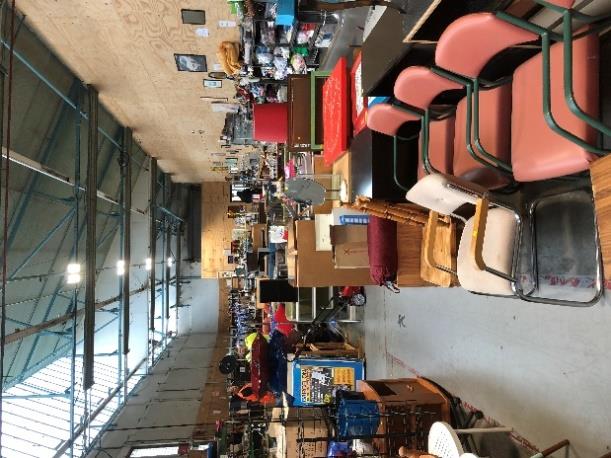
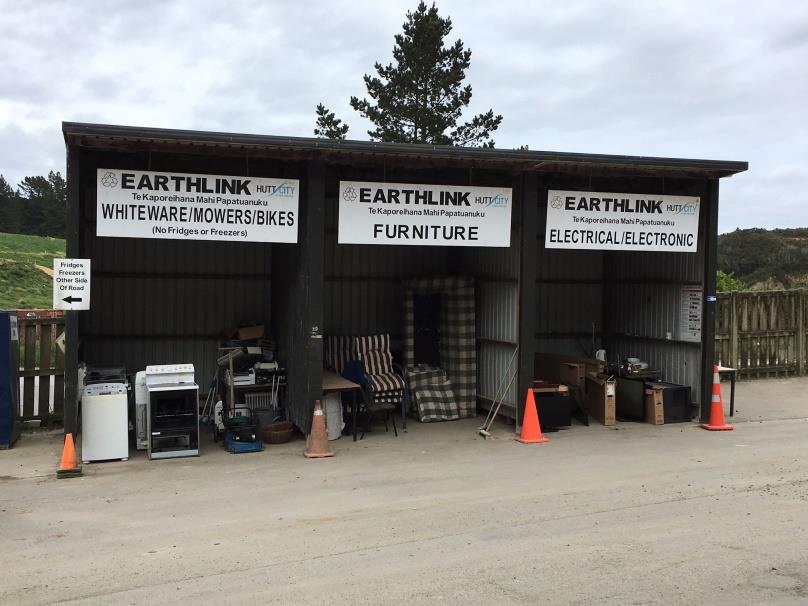 Option 1 – Status quo
Option 1 – Status quo
• Continuation of current arrangement
with Earthlink, but with focus on
valuable items (not tonnage per se)
• Traffic flow improvements already
under consideration
• Maintain at current financial support
($82k) from waste levy
•
BUT continuation of key
limitations (no financial incentive
to customers, poor weather
protection for items, H&S concerns)
Option 2 – Enhanced status quo
• Improved reception area for items dropped off, preserve value of
items
• Better shelter for resource recovery staff
• Incentivise diversion by changes to landfill gate fee (eg discount
voucher)
•
BUT:
• initial upfront investment to improve storage and drop off
point (~ $300k, one-off) albeit costs could come from HCC’s
(ring-fenced) waste minimisation reserve fund or an
application to the Government’s Waste Minimisation Fund
• Potential reduction in landfill income (estimated at $50k/year)
Option 3 – Private site
• Customers drop-off items at separate resource recovery site (eg
Earthlink), no drop-off at Silverstream
• Could enable a more fit-for-purpose facility
•
BUT:
• customers less likely to go to two separate destinations in
one trip
• would require increased on-going funding support from HCC
to maintain viability
• risk of reduction in diversion as no site close to the immediate
drive up to the landfill
Options not considered further
No service
Not assessed as does not meet strategic objectives
Expand scope to include construction and demolition waste
unlikely to be demand for expanded service scope as virgin
materials available at low cost and waste disposal costs are
low (refer recent Tonkin & Taylor report on C&D waste)
 Kerbside collection
Relevant WMMP 2017-23 actions:
Kerbside collection
Relevant WMMP 2017-23 actions:
•
C.1: Investigate options and costs of a two-stream recycling
collection, by 2019
•
C.2: Investigate the use of wheelie bins for kerbside recycling
by 2019
•
IN.4: Review effectiveness, number, and positions of
community recycling stations. Implement agreed changes (if
any)
Current service and case for change
Kerbside refuse collection
• Weekly collection pre-paid official refuse bags
• Significant health and safety concerns with bags (handling injuries)
• Most customers prefer bins albeit bag market share currently stable
at 30%
Kerbside recycling collection
• Weekly collection of 55L crates
• Significant concerns about wind-blown litter and also rain damage
Recycling drop-off stations
• Unstaffed sites attracting illegal dumping and associated costs
• Incorrect use / abuse resulting in bin content contamination
Kerbside food or green waste collection
• Currently no kerbside collection service
 Recycling
Recycling
 Option 1: continue with crates only
Option 1: continue with crates only
• Continued concerns about wind-blown litter and rain damage
(some people use nets but they can get damaged and/or lost,
and are not mandatory)
• Continued concerns about crate capacity
• Would continue to rely on recycling stations to take overflow,
but concerns regarding illegal dumping and bin contamination
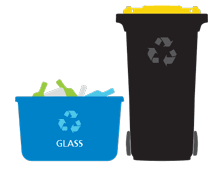 Option 2: two-stream recycling
Option 2: two-stream recycling
• Two-stream recycling using wheelie bin for mixed
recyclables and a crate for glass collected fortnightly
• Higher capacity bins with latches will
reduce wind-blown recycling litter
• Bin option used in many NZ cities:
Auckland, Christchurch, Wellington,
Dunedin, Porirua, Palmerston North
• Glass in separate crate to protect value of other recycling
(paper) and to enable sorting on truck to protect value of colour-
sorted glass
• Following roll-out of high capacity kerbside bins, phase out
unstaffed recycling stations, retain only in two strategic
locations (co-located with key staffed waste infrastructure, such
as a transfer station)
Estimated costs recycling
Current
Estimated future
System
Crates,
Crates,
2-stream,
weekly
weekly
fortnightly
Annual cost
$40*
$82
$69
per household
($65 - $100)
($55 - $85)
Total service
$1.2m
$2.6m
$2.2m
cost
• Cost range based on mid-point estimate +/- 20%; total service cost based on
mid-point estimate
• Market changes over the last two years means less revenue from recycling for
contractor, thus future collection costs for status quo likely higher than at present
• Costs for 2-stream collection in line with current costs in Dunedin ($66/property)
and Porirua ($74/property)
• Recommend further cost analysis and consult & report back to Council as part of
the 2020 annual plan process
* Crates and nets are sold on an at-cost basis, not included in the annual targeted rate of $40 per property
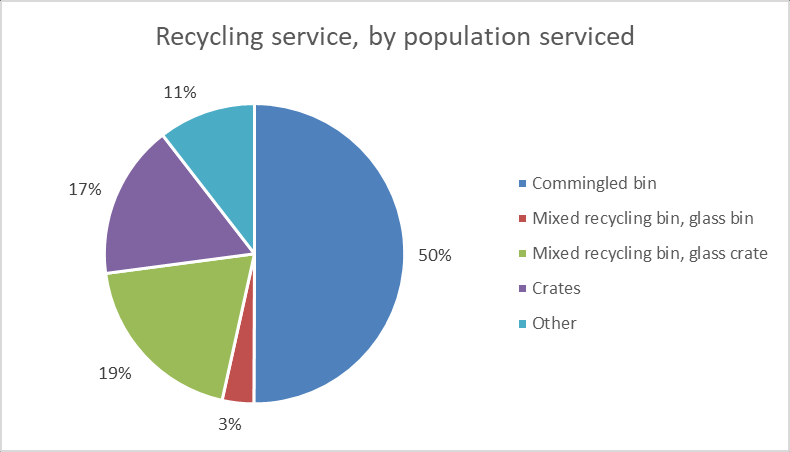
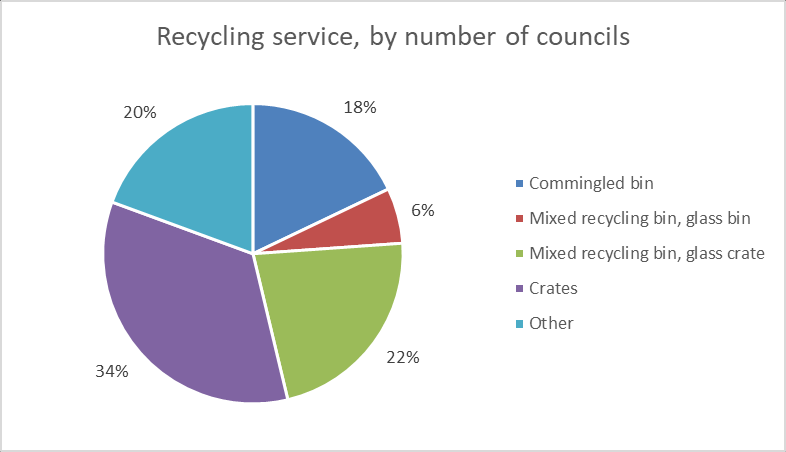
Currently not possible
Recycling: What are other councils doing? in Wellington region
due to lack of
infrastructure
Recycling service
Population serviced
Number of councils
Commingled bin
2,123,319
12
Currently
Mixed recycling bin, glass bin
144,504
4
only on trial
basis
Mixed recycling bin, glass crate
824,278
15
Crates
704,538
23
Other
444,501
13
Total
4,241,140
67
Options not short-listed
No service
Not assessed as does not meet strategic objectives
One stream 240L bin for commingled recycling, including glass
Not viable as no infrastructure to deal with commingled glass
Separate organics collection
No kerbside organics collection service short-listed at this stage due
to lack of clear carbon footprint comparison and further market analysis
required (eg processing infrastructure and end-market for collected
materials)
Wellington City Council trialling a separate food organics collection
from later in 2019; opportunity to follow their progress and apply lessons
learnt
acceptance of green waste at landfill is being assessed separately,
still to be completed, but if no longer accepted, would affect landfill
revenue
 Refuse
Refuse

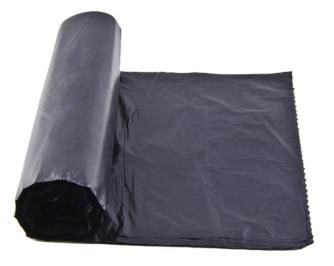 Option 1: continue with bag service
Option 1: continue with bag service
• 30% of users still want this service
• Incentive for waste minimisation, only pay for what you use ($2.50 per bag)
• Council achieves approximately $400k in revenue
•
BUT:
• Market share currently stable, but there is a risk that costs could
increase and this could affect revenue
• Health and safety concerns (eg injuries, animal strike)
 Bag service: safety issues
Bag service: safety issues
Proportion of injuries by collection method
(crate)
•
Automated bin collection makes up nearly half of the systems, but only 5% of the
injuries
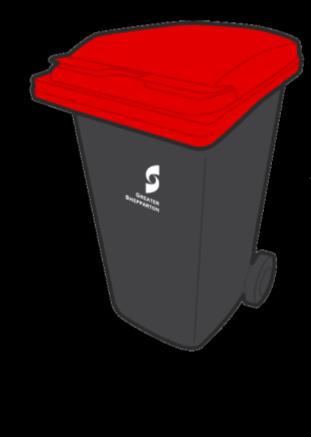
 Option 2: Discontinue Council service
Option 2: Discontinue Council service
• Council pulls out of service provision, and users are free to chose their own
provider (eg as is done in Kapiti)
• Users do not have to engage a provider, they could share bins
• Private operators do not offer bag collection, so this would effectively mean
moving fully to bins (addresses health and safety risks associated with
bags)
•
BUT:
• Tends to be more costly per household as private operators do not get
the economies of scale
• Council currently achieves $400k in revenue from its bag service
• There is still demand for bags and private operators
do not offer this
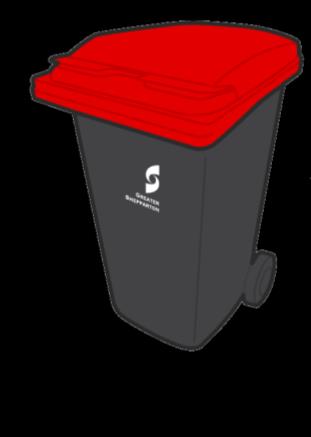
 Option 3: Rates-funded bin
Option 3: Rates-funded bin
• Addresses health and safety risks associated with bags
• Range of bin sizes can be provided (80L / 120L) to match customer needs
• Could still enable private service providers to operate if Council service is
limited to small bin options (eg for those wanting larger bins)
• Ensures Council still provides a service that customers expect
• Can be more cost effective for households currently using small private bins
(eg 120L)
•
BUT:
• Transfer costs from user pays to rates funding rates impact,
potentially by 5%
• Unless Council service is limited to only small bins, could reduce
options for private operators with potential job losses
• Can disadvantage those that create little waste (single person
household, elderly) and in hilly areas (or where access is difficult)
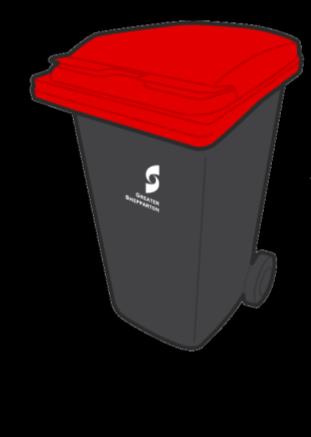
 Option 4: PAYT bin
Option 4: PAYT bin
• “
Pay As You Throw”
• Similar to Option 3 but enables households to pay only for bin collection
when needed
• On average slightly more expensive than Option 3, but cost effective for
households with little waste
•
BUT:
• PAYT technology still not full commercialised
• Council currently achieves $400k in revenue from its bag service
Estimated costs
Pre-paid
Opt-out
Rates Funded PAYT Refuse
Service option
Official Refuse Refuse Service Refuse Bins
Bins
Bag
Annual average
$130 - $143
$240 - $342
$115 - $175
$190 - $280
cost / household
Frequency
one bin pick-
one bin pick-
one bin pick-
one bag per week
assumptions
up/week
up/week
up/week
Low: $2.50/bag in
Low: lowest cost
Range based on
Range based on
Lower Hutt
offer in Lower Hutt mid-point at
mid-point at
High: $2.75/bag
at $4.62/week for
$144 (at $2.77
$234 (at $4.50 /
Household cost in Porirua
80L bin
per pick up)
pick up)
assumptions
High: average of
+/- 20%
+/- 20%
advertised prices
at $285 (at $5.50/
pick up) + 20%
• Changing to bin models could have impact on rates, and/or potentially lead to
$400k loss in council revenue (due to loss of bag service), but could also be
more cost effective for households
• Recommend further cost analysis and consult & report back to Council as part of
the 2020 annual plan process
Household cost scenarios
Pre-paid
Opt-out Refuse Rates Funded
PAYT Refuse
Service option
Official Refuse
Service
Refuse Bins
Bins
Bag
Assumptions
$2.50/bag in Lower
$4.62/wk for 80L
$2.77/wk for 120l $4.50 per pick up
Hutt
bin or $5.50/wk
bin
for 120l bin
for 120l
Household A: One person, 60l of rubbish every three weeks
Estimated cost
$43
$240
$144
$58.50
(pick up four-weekly)
Household B: Three people, 120l of rubbish per week
Estimated cost
$260
$286
$144
$234
(pick up weekly)

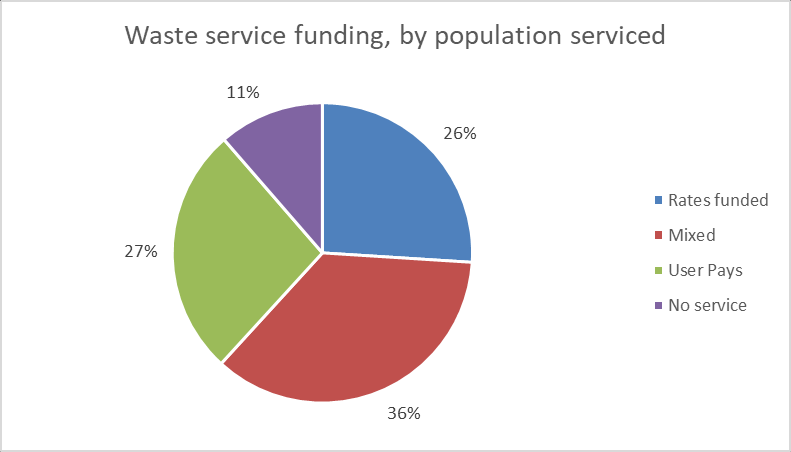
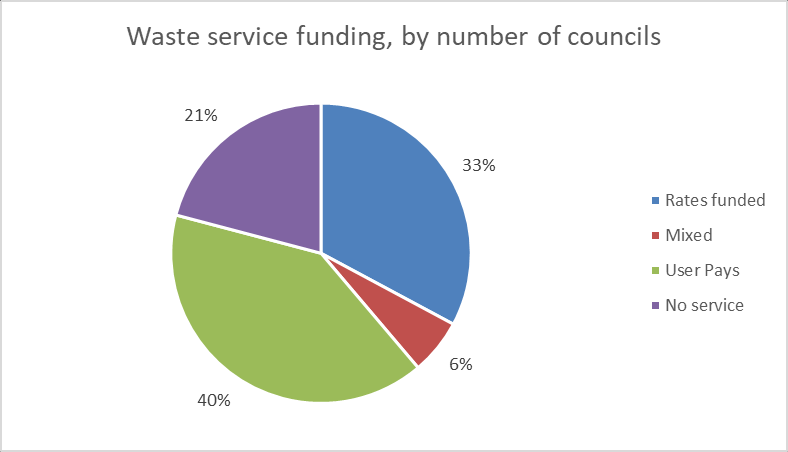
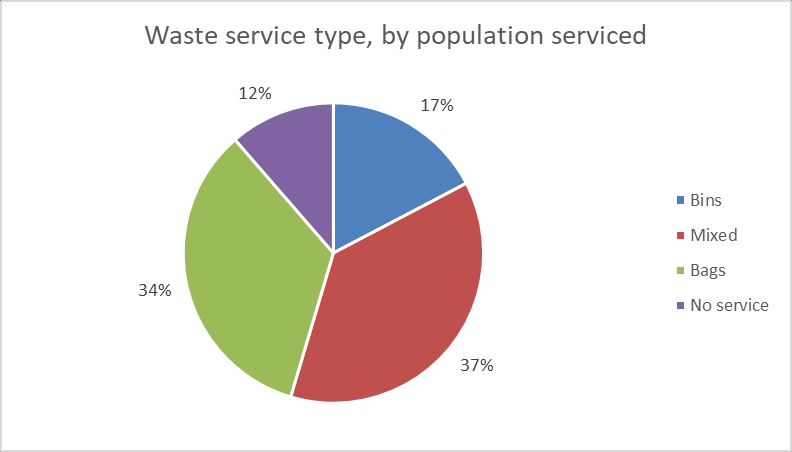
 Refuse: What are other Councils doing?
Refuse: What are other Councils doing?
 Next steps
Next steps
Next steps
• Councillor feedback today and following this workshop on
the shortlisted options
• Carry out more detailed cost modelling and analysis for
kerbside options
•
Note: current kerbside contract expires in September
2019, but working on extending by one year, in order to
enable the completion of the waste reviews to inform
approach for next service contract
• Undertake community consultation on relevant options as
part of the annual plan process in early 2020
• Mid-2020: Council decisions on preferred approach
• Late 2020 / early 2021: New service contract in place
 Low carbon
Low carbon
opportunities
Electric trucks?
• HCC recycling waste services ~ 270 tonnes of CO (trucks)
2
• Opportunity for Council to move to fully electric trucks for
collecting recycling and/or rubbish as part of the roll-out of
any new collection approach ~ 80% carbon savings
• EV technology very suitable as short-start operation, and
predictable and relatively short routes
• A number of vehicles now in regular operation
• Technology is becoming cost-competitive, but costings
would need to be tested as part of the procurement process
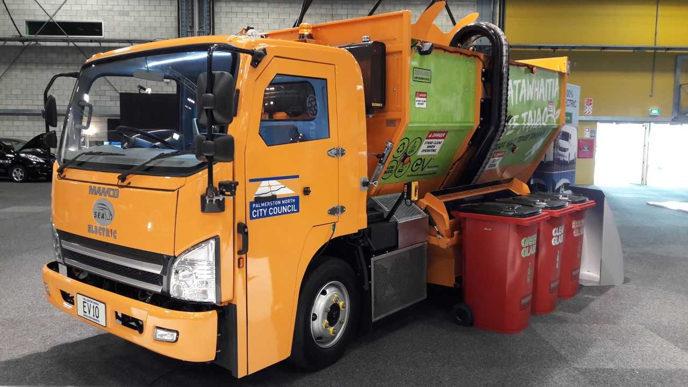 Palmerston North
Palmerston North
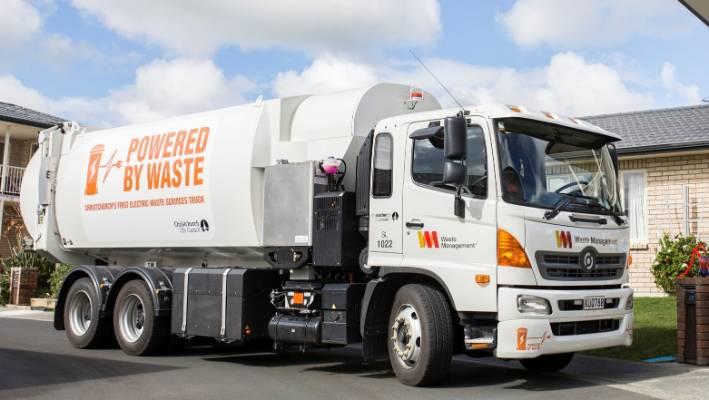 Christchurch
Christchurch
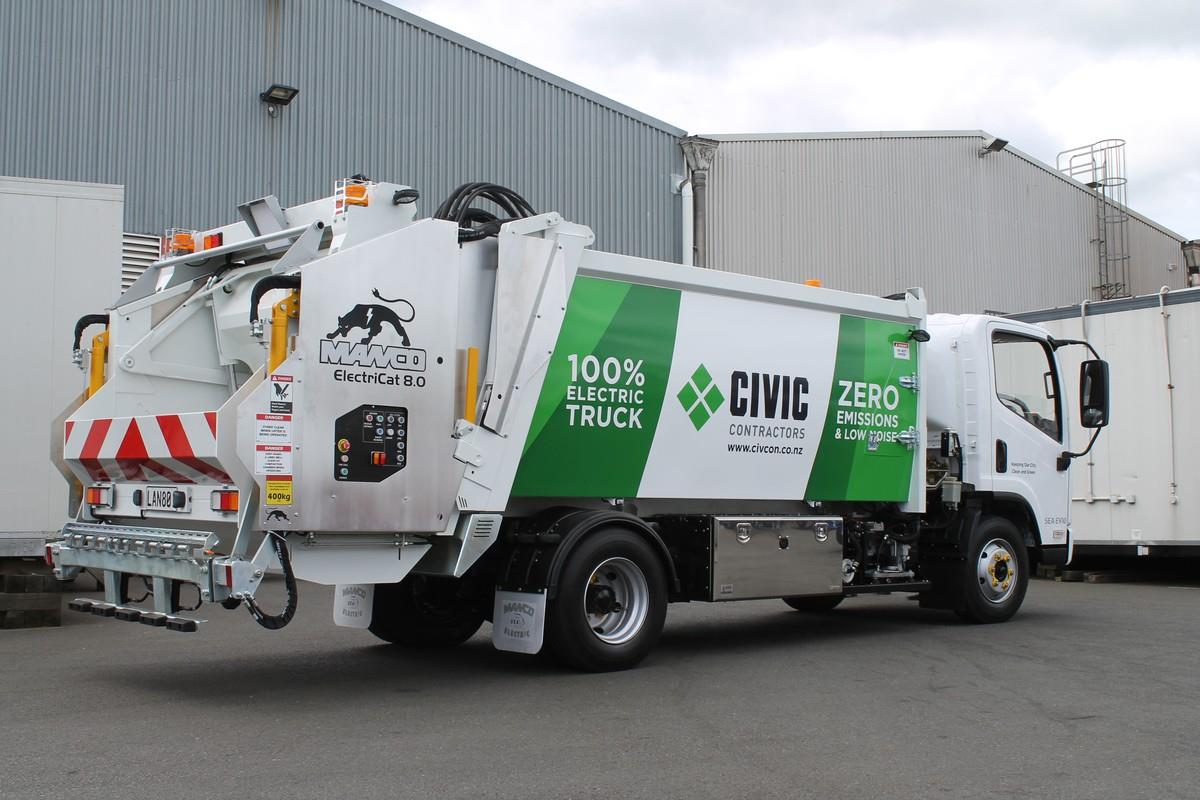 Civic
Civic
 Thank you
Thank you
 New traffic layout under consideration
New traffic layout under consideration
 Recyling sorting facility
Recyling sorting facility





































